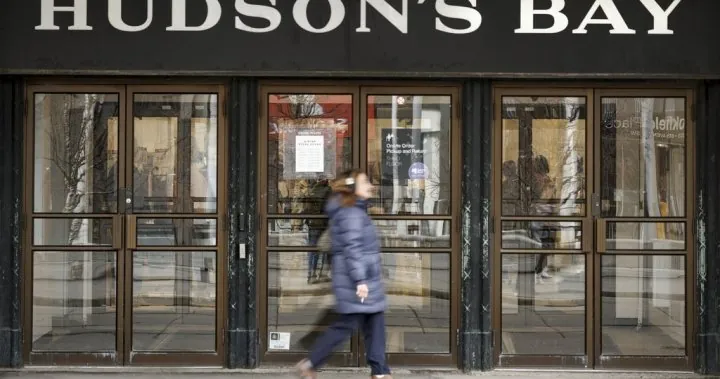
Shocking Ruling: Ontario Judge Rejects Hudson’s Bay Rescue Plan, Company Faces Uncertain Future!
2025-03-30
Author: Benjamin
Overview of the Ruling
In a surprising turn of events, an Ontario judge has turned down a crucial restructuring proposal for Hudson’s Bay, intensifying fears that the storied retailer may be headed towards receivership. The ruling was delivered on Saturday by Ontario Superior Court Judge Peter Osborne, who stated that the proposed agreement was “neither necessary nor appropriate at this time,” casting serious doubt on the company’s financial viability.
Details of the Proposal
The rejected agreement would have set an April deadline for Hudson’s Bay to salvage its struggling business while granting significant control to its senior secured lenders, including the Bank of America, Restore Capital, and Pathlight Capital. This move could have allowed lenders to impose a strict budget that Hudson’s Bay would have needed to adhere to, increasing their power in the creditor protection process. The stakes remain high, as these lenders have collateralized loans that permit them to seize company assets to recover unpaid debts.
Judge’s Concerns
In a critical aspect of the judge’s decision, he emphasized that he was “reluctant” to approve the plan, particularly because the detailed budget wasn’t submitted for review to the court or any stakeholders. This lack of transparency would have unfairly favored the lenders over other stakeholders involved in the process. “Our monitor is sufficient to balance their rights with those of other stakeholders,” Osborne stated, underscoring the necessity for a fair approach in these proceedings.
Impact on Hudson's Bay
The decision is a significant step in the ongoing creditor protection saga that has enveloped Canada’s oldest retail company, especially after Hudson's Bay publicly acknowledged its financial turmoil on March 7, revealing it could no longer meet payment obligations to landlords and suppliers.
Strategic Responses
As part of its strategy to navigate these troubled waters, Hudson's Bay has initiated the liquidation of all but six of its 80 stores, which include its subsidiaries Saks Off Fifth and Saks Fifth Avenue. The ongoing liquidation has led to discussions about potentially adapting the list of stores subject to closure based on financial assessments. The few locations spared thus far are situated in the Greater Toronto and Greater Montreal areas, leaving the future of many employees and customers hanging in the balance.
Stakeholders' Views
The restructuring plan was viewed by some as the last barrier preventing lenders from pushing for a receivership—a judicial process where a third party takes control of the company’s assets to settle debts. Though Restore Capital’s lawyer Linc Rogers expressed a desire to avoid this scenario by steering clear of conflict, landlords counter-argued that the company’s survival rested not on this agreement, but on pursuing other avenues for potential buyers interested in acquiring Hudson’s Bay’s business or assets.
Concerns Over Lender Influence
Some stakeholders have openly criticized the idea of granting greater influence to the lenders, arguing that it would redirect the future of Hudson’s Bay into their hands, thereby incentivizing liquidation over restructuring. “They are incentivized to liquidate,” claimed David Bish, a lawyer representing Cadillac Fairview, which manages numerous properties hosting Hudson’s Bay outlets.
Future Negotiations
Interestingly, during the proceedings, Restore Capital did offer to revise the proposal and allow Hudson’s Bay additional time to avert liquidation of the six remaining stores, indicating that there are still possible avenues for negotiation, but uncertainty looms over how this will all play out.
Conclusion
As Hudson’s Bay grapples with this major legal setback, the retail landscape watches closely, aware that the outcomes of these proceedings could have significant implications for the future of not only the iconic brand but also for numerous employees, suppliers, and customers who depend on its survival. The clock is ticking, and the next steps will be crucial as the retailer fights to stay afloat amid mounting pressures.









 Brasil (PT)
Brasil (PT)
 Canada (EN)
Canada (EN)
 Chile (ES)
Chile (ES)
 Česko (CS)
Česko (CS)
 대한민국 (KO)
대한민국 (KO)
 España (ES)
España (ES)
 France (FR)
France (FR)
 Hong Kong (EN)
Hong Kong (EN)
 Italia (IT)
Italia (IT)
 日本 (JA)
日本 (JA)
 Magyarország (HU)
Magyarország (HU)
 Norge (NO)
Norge (NO)
 Polska (PL)
Polska (PL)
 Schweiz (DE)
Schweiz (DE)
 Singapore (EN)
Singapore (EN)
 Sverige (SV)
Sverige (SV)
 Suomi (FI)
Suomi (FI)
 Türkiye (TR)
Türkiye (TR)
 الإمارات العربية المتحدة (AR)
الإمارات العربية المتحدة (AR)